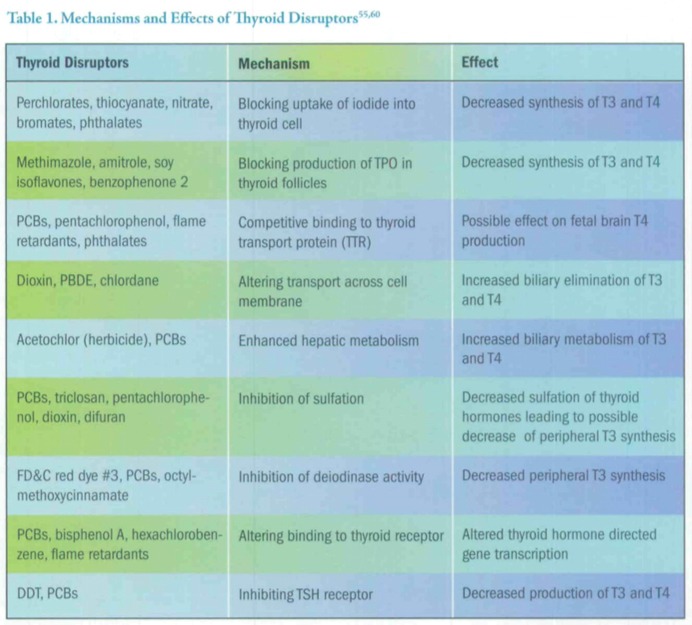
In my last post, I provided information regarding the structure and function of the thyroid, in addition to the differences and utility of each thyroid hormone. In the following sections, I would like to briefly explore the impact of environmental exposures (EEs), toxins, and their affects upon thyroid health.
Patrick (2009) indicated that EE of polychlorinated biphenyls (found in fluorescent lights, hydraulic fluid), dioxins (gases from burning medical waste, metal smelting), phthalates (food packaging, personal products), polybrominated diphenylethers (flame retardants, furnishings) interfere with the production/transportation/metabolism of thyroid hormones. Furthermore, such toxins tend to bind to thyroid receptors within cells, competing against thyroid hormones for cell signaling.

Once interacting with target cells and tissues, said toxins can be agonistic or antagonistic upon thyroid hormone signalling (Patrick, 2009). As such, any chemical that affects thyroid metabolism (either through hypothalamus/pituitary pathways or directly interacting with target cells) are termed thyroid disrupters (Patrick, 2009). Please see below chart for major endocrine disruptors and mechanisms of action:

Thyroid disease, including autoimmune thyroid disease and thyroid cancer, is prevalent in the United States (Patrick, 2009). Though the above list of toxins is not exhaustive, it should remind individuals that there can be a high degree of exposure to xenobiotics throughout the lifespan. Although exercise, optimal nutrition, and adequate sleep are central to maintaining health, one might also strongly consider environmental exposures.
In conclusion, when evaluating thyroid health and interpreting unfavourable test results (i.e., TRH, TSH, T4, T3, free T4, free T3, reverse T3), one should consider possible origins (i.e., use of plastic bottles, fire retardant furniture, packaging of food etc.) of thyroid dysregulation when developing a treatment plan. If left unconsidered, interventions may chase symptoms, rather than cause.
References
Patrick, L. (2009). Thyroid disruption: Mechanisms and clinical implications in human health. Alternative Medicine Review, 14(4), 326-346.
-Michael McIsaac
